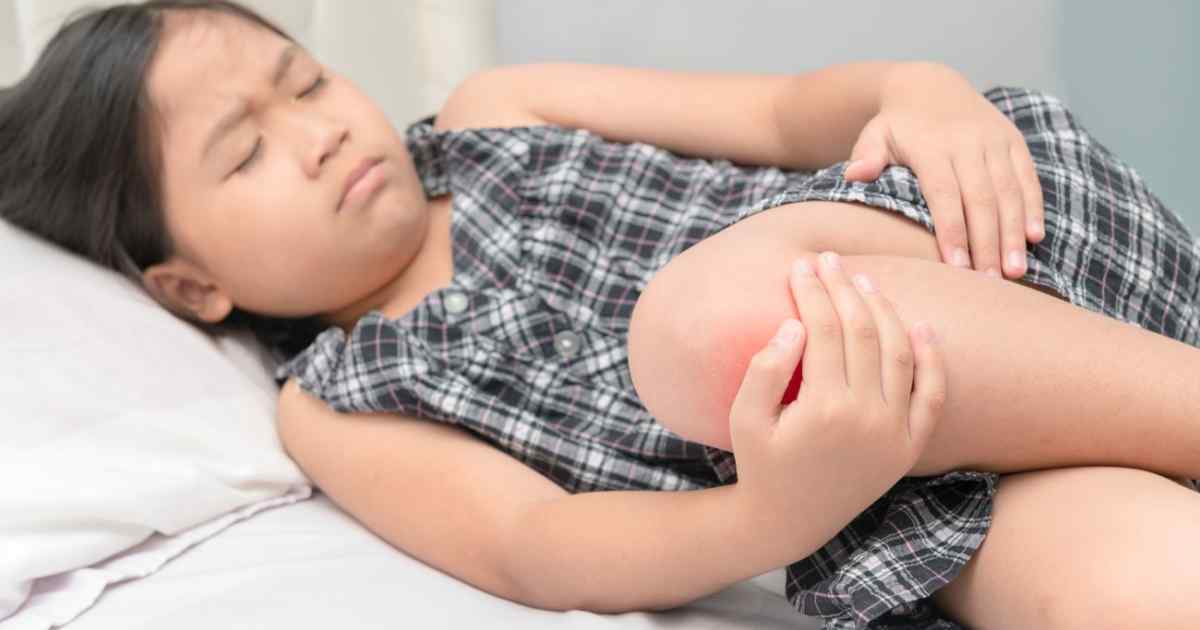Childhood is often full of aches and pains, but some should raise an alarm. Many forget that juvenile arthritis affects many American children. Start a search today to find out when you should be concerned about joint pain in children.
Juvenile arthritis affects as many as 300,000 American children. It’s important to catch it early because, unlike regular arthritis, it is possible for medication and treatment to force juvenile arthritis into remission.
What Is Juvenile Arthritis?
Juvenile arthritis is an umbrella term used to describe the various conditions or pediatric rheumatic diseases that affect children under the age of 16. Usually, a child is diagnosed with a specific condition that falls under the umbrella of juvenile arthritis. Some of the most common of these pediatric diseases and illnesses are juvenile idiopathic arthritis, juvenile lupus, and juvenile dermatomyositis. Many of these conditions involve the joints, as well as the muscles and tendons around the joints.
Juvenile idiopathic arthritis (JIA) is the most common. It’s a condition where the immune system mistakenly attacks healthy tissue, which causes inflammation of joints as well as other critical body parts. The term “idiopathic” literally means “of unknown origin” because doctors and researchers still aren’t sure what causes juvenile arthritis. There are six different types of JIA, which are either considered an autoimmune disease or an autoinflammatory disease, depending on the type.
Common Signs of Juvenile Arthritis
There are many different signs and symptoms of JIA, and not all children will display symptoms in the same way. In fact, some symptoms are limited to a very small subtype of JIA and may never affect your child at all.
The most common symptoms of JIA involve the joints. Warm, swollen, painful joints are often the first sign of trouble. Many types of JIA are often accompanied by a fever and rash surrounding the affected area. Many children may attempt to use the joints until stiffness or muscle weakness forces them to favor the opposite limb. Many children also lose weight and are unable to sleep. It’s important to pay attention to non-joint-related symptoms like fevers and rashes. Many sports-related or overuse injuries cause minor joint pain, but it usually goes away within a few days.
At this point, the causes of juvenile arthritis are still unknown. Some researchers think that genetic predisposition plays a major factor, but it remains unconfirmed.
What Are the Different Types of Juvenile Arthritis?
There are a number of different diseases that fall under the umbrella of juvenile arthritis, including juvenile lupus or juvenile scleroderma. These two conditions are examples of diseases that affect children’s joints, but can also affect skin, kidneys, and blood.
Within juvenile idiopathic arthritis, there are six subtypes. The most concerning subtype is systemic JIA, which involves inflammation of multiple joints, a high fever that lasts at least two weeks, and a skin rash. Oligoarticular JIA refers to JIA that affects a smaller number of larger joints like knees and elbows, and often means a child’s eyes will become inflamed due to a chronic inflammatory eye condition called uveitis. Polyarticular JIA causes inflammation in at least five joints — often the joints that are inflamed are the smaller joints of the hand — and most closely resembles the adult subtype known as rheumatoid arthritis. Juvenile psoriatic arthritis occurs in conjunction with psoriasis, which usually begins before the joint-related symptoms become apparent. Enthesitis-related JIA involves tenderness around tendons which accompanies inflammation of joints. Undifferentiated arthritis is used as a descriptor when a child’s symptoms don’t match any of the above subtypes.
How Is Juvenile Arthritis Diagnosed?
Since there are many different diseases and subtypes of juvenile arthritis, there isn’t one single test that can confirm a diagnosis. If you’re concerned that your child’s joint pain may not be the result of injury or strain, you should always take them in to see a doctor.
Your doctor will ask questions about their medical history and will physically examine your child’s limbs and joints to assess whether they’re swollen or red, and they’ll test their range of motion. To confirm their hypothesis, they will most likely use a blood test or urinalysis to measure the level of proteins and chemicals that are considered markers for juvenile arthritis, and they may order an X-ray, ultrasound, MRI, or CT scan to assess joint damage.
What Are the Treatment Options Available?
Luckily, there are a number of treatments and medications available that can help reduce pain and inflammation in joints affected by juvenile arthritis. If a diagnosis of juvenile arthritis is confirmed, your doctor will want to aggressively and quickly treat the disease because if JIA is caught early enough, remission is possible. Disease-modifying antirheumatic drugs, biological response modifiers, and corticosteroids are usually used together, and can help correct the faulty immune response while calming inflammation.
Once your child is on medication, an exercise regime that includes regular stretching (especially in the morning, when joints are the most stiff) and physical activity can help maintain bone and muscle health. A physical therapist can help tailor an exercise routine based on your child’s interests and areas that need improvement.
Learn more About Juvenile Arthritis Today
The best way to protect your child’s health is by getting informed. Knowing the warning signs of juvenile arthritis is the first step in getting your child the help they need. Remember early intervention is key. So, start a search online today to learn more about juvenile arthritis.
